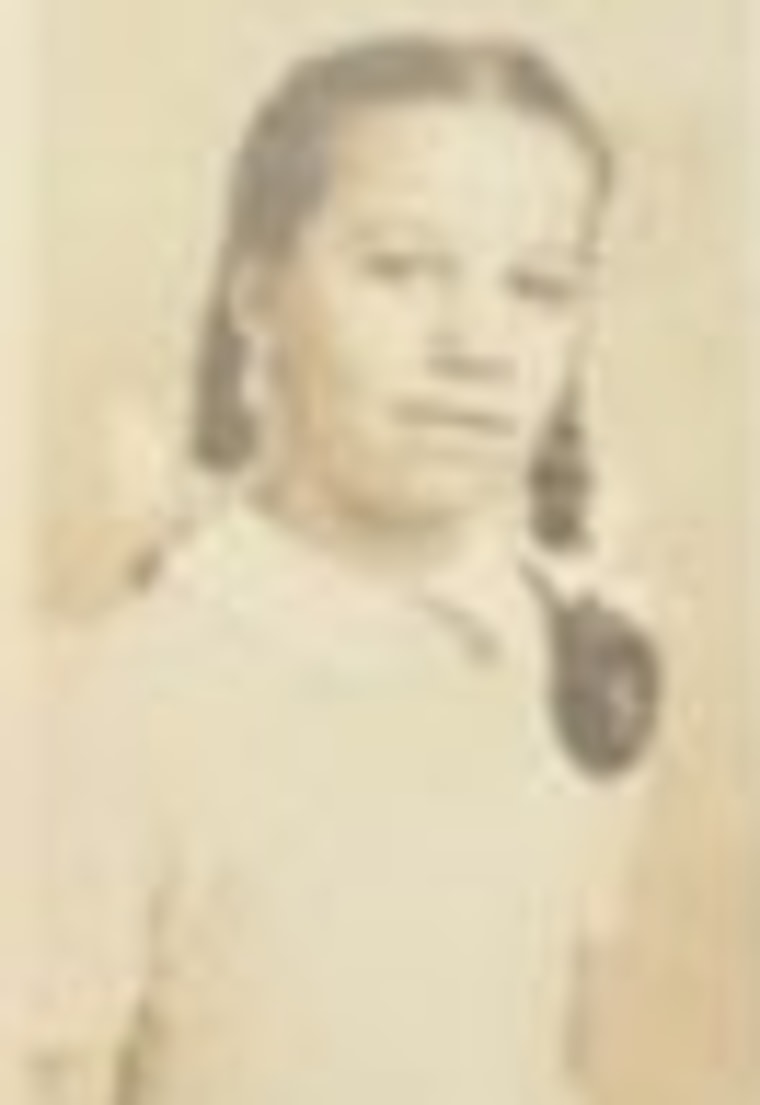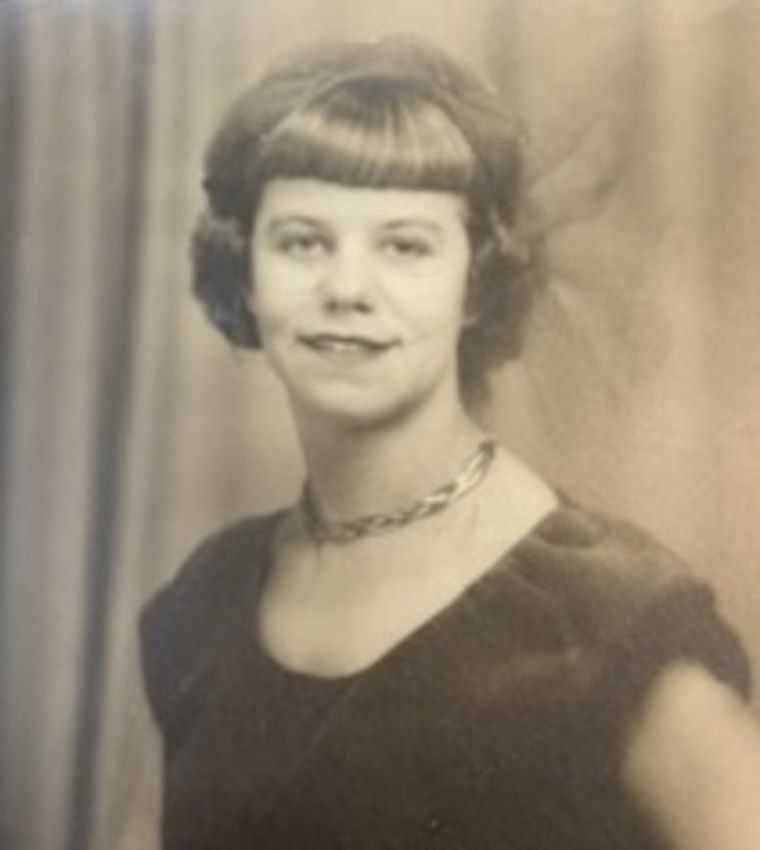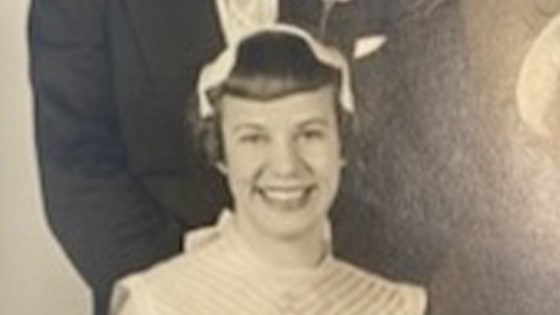In 1954, Phoenixville, Pennsylvania, was a quiet gem of the greater Philadelphia metropolitan area — a quaint town about 30 miles northwest of the heart of the city.
Bill Gore was 13 at the time and lived in Philadelphia. “Taking the train to Phoenixville was like going to the country,” he told Dateline. Home to a large population of Eastern European immigrants and their descendants — like Bill’s family — the town centered around Phoenixville Iron Works which provided work to many of the residents. “For the most part the town was self-sufficient,” Bill said.
It was not the kind of place where violent crime happened.
Perhaps that’s one of the reasons why the murder of 22-year-old Marguerite Keota on March 3, 1954, garnered so much attention. “This was splashed, of course, across the Philadelphia newspaper,” Bill said. “Murders like this didn’t happen.”
But it did happen. It happened to Bill Gore’s aunt.
Meet Marguerite Keota
The youngest of seven siblings, Marguerite was a beacon of light in her family — a kind, well-adjusted young woman with a soft disposition, according to her nephew. “She was always looked upon as being the baby,” Bill said. “All of her sisters and her brother were very close to her.”

Bill is the oldest child of his generation and only nine years younger than his aunt Marguerite. “I remember vividly, many times, climbing up on — going out the back window roof of the bathroom,” he said. “We would sun ourselves on the back roof of the house.”
He also remembers spending time with her in his grandparents’ vegetable garden. “They had a big cherry tree. I used to climb up the cherry tree to pick cherries and come down with them,” he said. His grandmother had a machine that separated the seeds from the cherries. “Marguerite would work that and I would be throwing the cherries in.”
Bill is one of the few people left on earth who remembers Marguerite Keota. And one of the few who remembers how her murder changed his family forever.
After the Dance
March 2, 1954.
Around 8:00 p.m., Marguerite and a few friends went to a dance just outside Phoenixville.
Detective Sergeant Patrick Mark of the Phoenixville Police Department, who has reviewed the reports from the investigation, says the group left around 9:40 p.m. to go to another dance, this one at the Polish American Citizens Club on the north side of town. “They were there till about 12:00 in the morning on the — into the third of March, 1954,” he told Dateline.
Marguerite and a friend named Julia left the dance together. They walked for about half an hour until they separated at the corner of Gay St. and Morgan St. to continue to their respective homes.
According to a witness statement Julia gave to Phoenixville PD, Marguerite said something to her before they separated: “If you don’t see me in the morning, look for me in Burns Alley.” Burns Alley was behind Marguerite’s parents’ house, according to Bill, who says the family didn’t know why Marguerite would say that. “The report indicates that this was all in kidding,” Mark told Dateline. “But I don’t know, you know, why somebody would say that. Um, certainly — certainly, you know, is suspicious.”

The detective sergeant says Marguerite and Julia went their separate ways around 12:40 a.m. Based on her assumed route, Marguerite would have been on Washington Avenue — about two blocks from home — approximately five minutes later.
“Residents at 361 Washington Avenue stated they heard a terrible shrill screaming at 12:45 a.m. They heard a scramble in the alleyway,” Mark said. “Then the residents reported they saw a man carrying a woman under his arms towards Lincoln Avenue, and then that person went north down on Lincoln Avenue.”
According to Mark, a separate witness reported seeing and hearing the same thing from across the street. He says the police report does not explicitly note that the woman was unconscious when she was being carried, but the witnesses “don’t indicate that she’s doing anything like screaming or kicking at the time.”
The second witness reported seeing something else, as well. “In a few minutes, a car came up Lincoln Avenue and turned right on Washington Avenue and stops across from the alleyway where [the man carrying the woman] came out,” Mark said. “He walked into the alleyway and picked something up, and returned to the car again and drove west on Washington Avenue.”
The witness who saw the man drive away was unable to see if anybody else was in the car.
Phoenixville PD believes the woman and man witnesses described seeing that early morning were Marguerite and her abductor, although they have never been able to confirm it.
A Horrific Discovery
“I remember she didn’t come home that day — that morning,” of March 3, Marguerite’s nephew Bill Gore told Dateline.
The family reported her missing that day. “It was hell,” Bill remembered.

His mother headed to Phoenixville from their home in Philadelphia to help with the search as soon as she heard the news. Phoenixville PD also organized searches. “For three days, they searched,” Bill said.
On March 6, three volunteer searchers made the discovery, according to Mark.
Marguerite Keota’s body was found in a cesspool under an outhouse behind an abandoned schoolhouse in Schuylkill Township, Pennsylvania — less than three miles from where she was last seen.
“The building portion of [the outhouse] was still standing, and then they looked in, um, inside of the hole and saw the body,” Det. Sgt. Mark told Dateline. “And then [police] dismantled the outhouse to get to the body.”
Mark says Marguerite had been stabbed three times on the left side of her chest, leaving a “massive hemothorax” on her left side. The weapon was never recovered, but it was determined to be a “straight, dagger-like blade with a double sharp edge,” Mark said.
There was also “material found in the bronchial tree,” from the cesspool, which would indicate that Marguerite was likely still alive when she was put there. She also had superficial abrasions on the left side of her neck and the right side of her face. She had not been sexually assaulted.
Based on where Marguerite was likely abducted and subsequently found, authorities believe the killer was familiar with Phoenixville and the surrounding area. “One of the original investigators indicated that, you know, that for somebody to know — somebody to be familiar with that area of Washington Avenue, and somebody to be familiar with that schoolhouse, that they would have to be local,” Mark explained.

The active investigation of the case lasted for more than a decade. “There’s probably a thousand pages of reports,” Mark said. “They developed a lot of suspects. They eliminated a lot of suspects.” Authorities interviewed people around the country. “Phoenixville had a lot of people coming and going,” he said. In addition to Phoenixville Iron Works, there was a military hospital in town at that time. “So they spent a lot of time tracking down potential leads.”
Nothing has led to Marguerite’s killer.
Of course, 71 years means the killer is likely dead. But maybe the next generation has the clue that will crack the case hidden somewhere in an attic or passed down in family lore.
Marguerite’s siblings have all since died, as well. “My mother had a breakdown — a nervous breakdown after that,” Bill Gore told Dateline. “She always talked about Marguerite — always said, ‘I wanna know who killed her. I just wanna know it.’” She died in 1998. “My mother was saying, ‘Nobody has done anything and I’m ready to die. I don’t know what happened. I want somebody to tell me something,’” he said.
Bill says the remaining descendants of the family would like to get the closure the older generation was never able to. “We would like just to know that — who it was that did it,” he said. “If we knew who did it, we’d probably know why.”
Detective Sergeant Mark says Marguerite’s homicide is an open case and asks anyone with information to contact the Phoenixville Police Department Detective Division at 610-933-1180 ext. 815.
If you have a story to share with Dateline, please submit it here.
